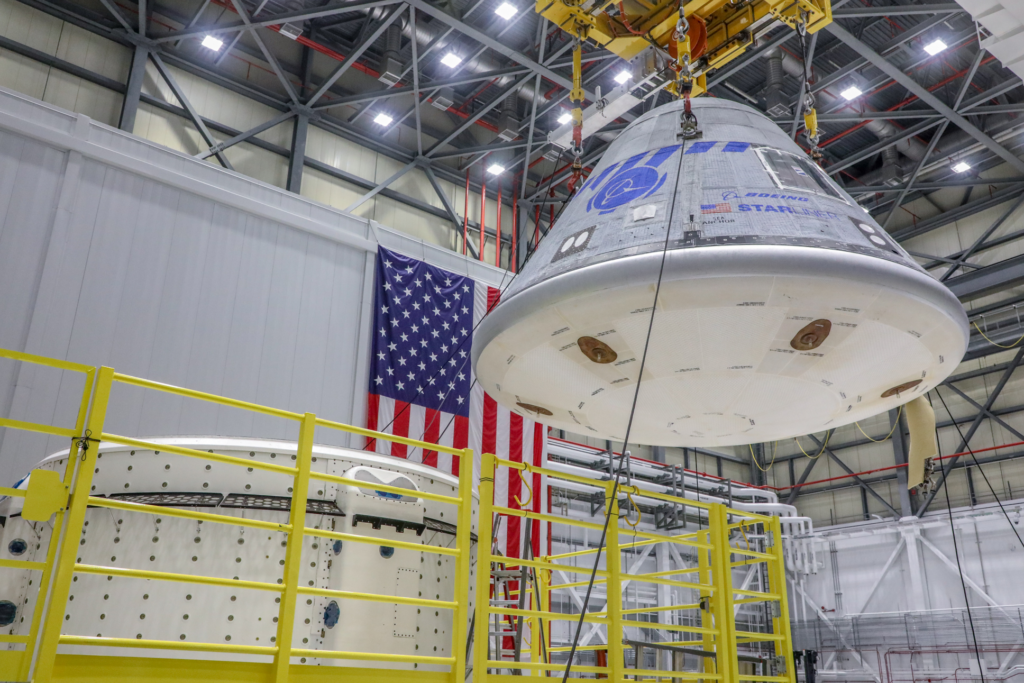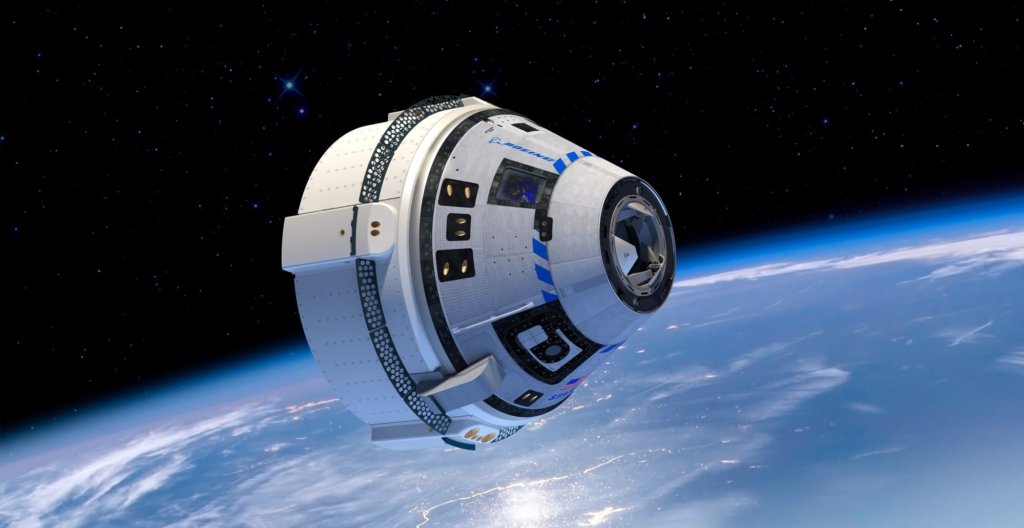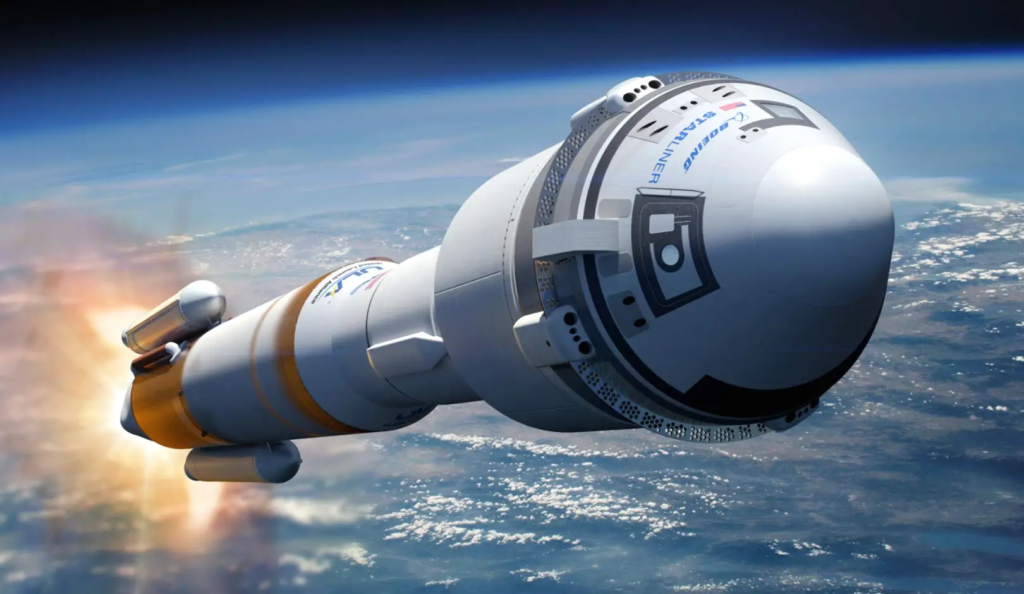
Boeing’s Starliner Spacecraft Is About To Launch Its First Crew
The Starliner spacecraft has had somewhat of a rough history thanks to various delays, complications, and general problems. While not ideal, Boeing has continued to develop and test the spacecraft in preparation for future crewed missions to the ISS and other low Earth orbit destinations. Only months from now, Starliner is set to attempt its most significant test yet with a crewed flight.
Specifically, scheduled to launch in April this year, Starliner will launch atop ULA’s Atlas V with two crew members aboard and attempt to dock with the International Space Station. The entire mission is only expected to last around a week and is mainly a demonstration of Starliner’s capabilities. This being said, in the past this spacecraft has had a few problems relating to docking with the station.
Back in 2019 during the spacecraft’s first test flight, a mission clock error caused the spacecraft to compute to consume more fuel than planned, precluding a docking with the International Space Station. Something Boeing is trying to ensure they avoid this time around. Here I will go more in-depth into this upcoming test flight, what recent progress has been made, what to expect in the coming weeks, and more.
Recent Updates

In the past couple of weeks, a lot has been happening relating to this mission as the official launch date closes in. Most recently, on the 17th, NASA and Boeing held a mission overview media teleconference Friday to provide a status update on the first astronaut flight test of the company’s CST-100 Starliner to the International Space Station. During the call, managers shared mission progress and discussed upcoming milestones ahead of NASA’s Boeing Crew Flight Test (CFT), which is targeted to launch no earlier than mid-to-late April to the microgravity laboratory.
CFT is the final flight test prior to regular crewed missions to the space station on the next-generation system. For CFT, the Starliner spacecraft will launch on a United Launch Alliance Atlas V rocket from Space Launch Complex-41 at Cape Canaveral Space Force Station in Florida, returning approximately eight days later in White Sands, New Mexico. The flight will carry two NASA astronaut test pilots, Barry “Butch” Wilmore and Suni Williams, on the demonstration flight to prove the end-to-end capabilities of the Starliner system.
Following a successful test flight with astronauts, NASA will begin the final process of certifying the Starliner spacecraft and systems for regular crew rotation flights to the space station. About one month ago, Boeing’s CST-100 Starliner team completed the production milestone. During the operation, a crane lifted the reusable crew module atop the brand-new service module in the Commercial Crew and Cargo Processing Facility at NASA’s Kennedy Space Center to become a fully operational spacecraft. “Every member of our team is invested in giving Butch and Suni a great ride to the International Space Station,” said Mark Nappi, vice president, and program manager for the Starliner program. “We’re building off the successes and lessons learned from Orbital Flight Test-2, and all of the pieces for CFT are coming together.”
With a completed spacecraft, teams will continue outfitting the crew module’s interior, conducting integrated vehicle testing, and performing final spacecraft checkouts. The spacecraft will then undergo weight and center of gravity testing prior to rolling out of the Starliner factory en route to its United Launch Alliance Atlas V launch complex. Originally, Boeing was awarded a US$92.3 million contract by NASA in April 2011 to continue to develop the CST-100 under CCDev phase 2. On August 3, 2012, NASA announced the award of US$460 million to Boeing to continue work on the CST-100 under the Commercial Crew Integrated Capability (CCiCap) program. Since then, the company has been working to develop and get this spacecraft ready for crewed missions. Now in 2023 after over a decade of development and flight tests, the company is only months away from this historic mission.
Starliner Overview

Now that we know more about Starliner’s current operations and its upcoming crew launch, we can take a closer look at the spacecraft’s past missions and what changes have been made to ensure crew safety. Most recently, we watched the mostly successful OFT-2 mission. OFT-2, using Starliner Spacecraft 2, launched on May 19th, 2022, and lasted 6 days. Starliner successfully docked with the International Space Station (ISS) on May 21st. It stayed at the ISS for 4 days before undocking and landing in the White Sands Missile Range on May 25th, 2022. While it was a big improvement from the previous test flight, quite a few problems still arose.
For example, some issues were detected with 13 propulsion-system valves in the spacecraft prior to launch. Unfortunately, the spacecraft had already been mated to its launch rocket, and the problems count not be fixed at the launchpad. This led to the cancellation of the launch at that specific launch window. Once fixed, the OFT-2 mission launched in mid 2022. It again carried Rosie the Rocketeer test dummy suited in the blue Boeing inflight spacesuit. Two Orbital Maneuvering and Attitude Control System (OMACS) thrusters failed during the orbital insertion burn, but the spacecraft was able to compensate using the remaining OMACS thrusters with the addition of the Reaction Control System (RCS) thrusters. A couple of RCS thrusters used to maneuver Starliner also failed during docking due to low chamber pressure. Some thermal systems used to cool the spacecraft showed extra cold temperatures, requiring engineers to manage it during the docking.
On May 22, the capsule docked with the International Space Station. On May 25, the capsule returned from space and landed successfully. During reentry one of the navigation systems dropped communication with the GPS satellites, but Steve Stich, program manager for NASA’s Commercial Crew Program, said this is not unexpected during reentry.
It’s also important to point out that this upcoming crew mission will be using the same Starliner from the OFT-1 mission. For a while now Boeing teams have been refurbishing the crew module from the original test flight for the Crew Flight Test. This mission launched successfully on December 20th, 2019, but thirty-one minutes after launch the mission elapsed timer (MET) clock made an error. During a later press conference, it was revealed that MET was offset by 11 hours. When it became obvious that the maneuver did not happen, NASA and Boeing tried sending commands to get Starliner back on track, but the position of the spacecraft switching communications between two TDRS satellites delayed the orbital insertion burn. This delay resulted in an abnormal orbit and excessive fuel use. The decision was made to scratch the ISS rendezvous/docking since the spacecraft burned too much fuel to reach orbit even after Mission control center fixed the MET clock issue.
By 11:40 UTC, the Starliner was in a “stable orbit”, though orbital insertion was not nominal. It was later confirmed that Starliner had placed itself into a 187 x 222 km orbit. By 13:55 UTC, mission control center had realized that docking with the ISS was precluded. On December 22nd 2019, Starliner was cleared to reenter the Earth’s atmosphere. After deorbiting, Starliner reentered the Earth’s atmosphere, before successfully deploying all sets of parachutes. Starliner deployed airbags and successfully touched-down at White Sands Space Harbor. Though the ISS rendezvous that was planned for the OFT did not happen, Jim Chilton, vice president for Boeing’s space and launch division, estimated that Starliner has achieved over 60% of the flight objectives.
On February 7th, 2020, NASA shared their preliminary findings about the Boeing OFT mission and discovered software problems with the Mission Elapsed Time (MET), which incorrectly polled time from the Atlas V booster nearly 11 hours prior to launch. Another software issue occurred within the Service Module (SM) Disposal Sequence, which incorrectly translated the SM disposal sequence into the SM Integrated Propulsion Controller (IPC). This could have made the service module crash into the capsule after separation, potentially leading to a catastrophic failure of the capsule. In addition, an Intermittent Space-to-Ground (S/G) forward link issue, which impeded the Flight Control team’s ability to command and control the vehicle, was found.
Most importantly, on July 7th, 2020, NASA and Boeing announced the completion of the Space-to-Ground communication issue, marking the completion of the OFT review. The number of corrective actions was increased to 80 from the March 2020 update. 21 recommendations focused on a need for more testing and simulations; including the necessity to do full end to end tests prior to flights instead of testing in chunks as done in the OFT. 10 recommendations were made to cover software requirements such that they have proper coverage to catch errors during testing. 35 of the recommendations surrounded improvements over process and operations such as including more reviews and the use of experts. 7 recommendations covered software updates that address the three main anomalies that occurred during the flight. The final 7 included “Knowledge Capture” and Boeing organizational changes to enable better safety reporting. They also included hardware changes to filter out radio interference and others to address the communication issue. All of which will be applied to the upcoming crewed flight test in April.
Conclusion
Boeing’s Starliner has not had the smoothest start. After an initial failed mission its second flight test was successful and docked with the ISS. The spacecraft is now only months away from this first crewed flight test. We will have to wait and see how it progresses and the impact it has on the space industry.
